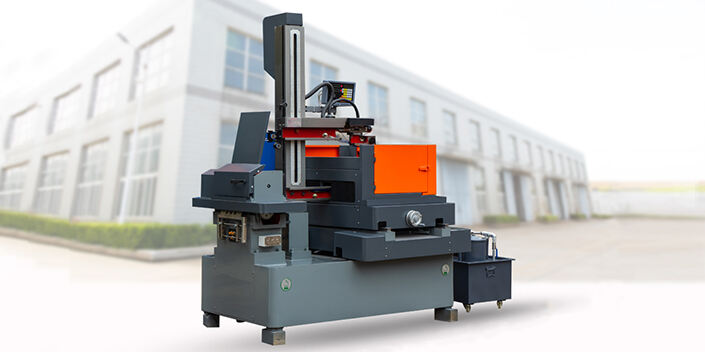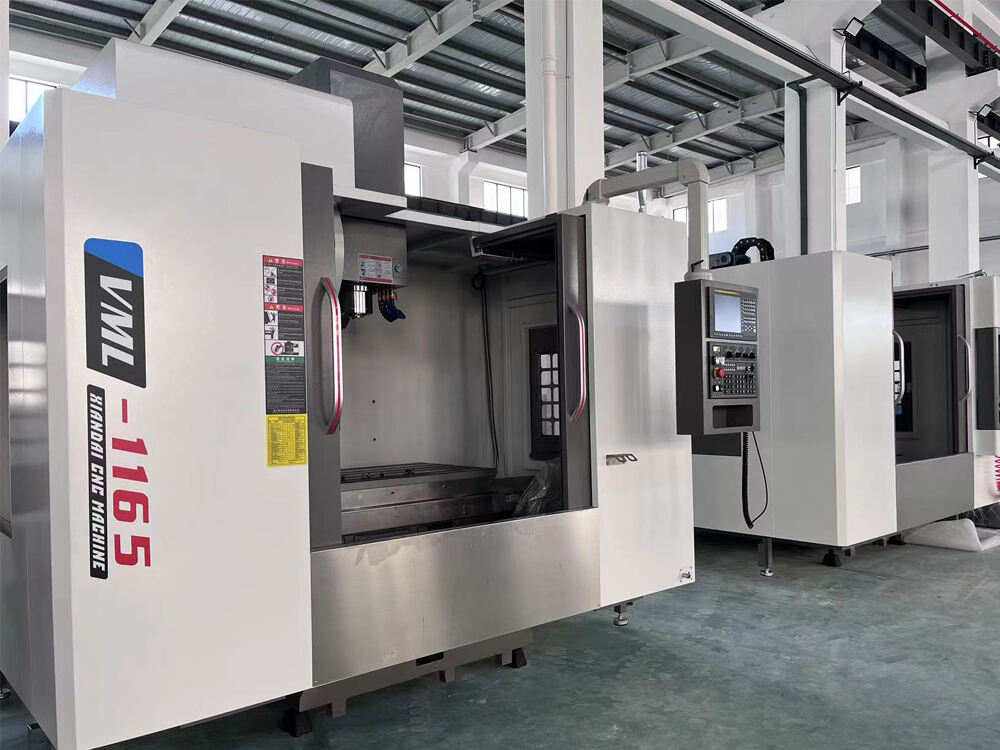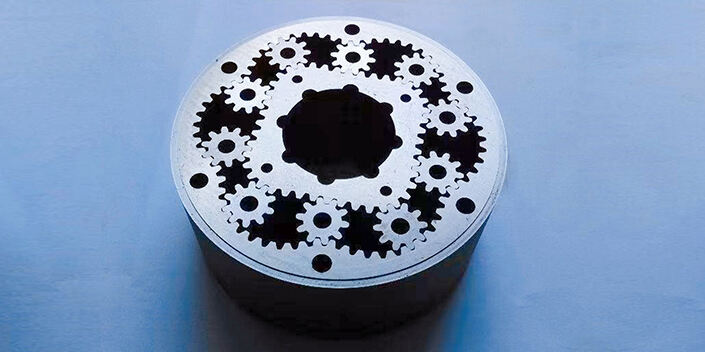Unmatched Precision of EDM Machines for Complex Manufacturing Demands
How Wire and Micro EDM Deliver Micron-Level Accuracy
EDM machines can get pretty close to ±2 microns in positioning thanks to those controlled electrical sparks that literally chip away at material one atom at a time. What makes EDM so special compared to regular cutting tools? Well, since there's no physical contact involved, we don't have to worry about tool deflection issues. That's why wire EDM can hold tolerances under 0.005 mm even when working with pieces over 300 mm thick according to what Advanced Manufacturing Journal reported back in 2023. And things get even more interesting with micro EDM systems which push these limits even further. These advanced setups can machine incredibly tiny features down to around 5 microns in size something absolutely crucial for making those intricate semiconductor molds and delicate optical components that modern tech relies on.
Achieving Tight Tolerances and Intricate Geometries with CNC-Controlled EDM
Today's CNC systems can align their axes down to 0.1 microns, which is pretty impressive when considering they also need to account for things like wire lag and changes from heat expansion. With this level of precision, EDM technology makes it possible to create all sorts of intricate shapes. Take turbine blades for instance - manufacturers can now make those complicated hexagonal cooling channels with walls that stay consistent within plus or minus 0.008 mm throughout production runs. Medical devices benefit too, especially bone screws where thread accuracy needs to be spot on at around 0.02 mm pitch. Even more remarkable are fuel injectors, which require tiny nozzles packed with hundreds of microscopic spray holes across each square centimeter of surface area. These capabilities represent a real breakthrough in manufacturing complexity.
Case Study: High-Precision Components in Medical Device Manufacturing
A leading implant manufacturer reduced post-machining rejection rates from 12% to 0.3% by switching to wire EDM for cobalt-chrome knee replacements. The technology delivered significant improvements:
| Metric | Traditional Milling | Wire EDM Result |
|---|---|---|
| Surface Roughness | Ra 1.6 µm | Ra 0.2 µm |
| Feature Accuracy | ±0.05 mm | ±0.005 mm |
| Production Cycle | 18 hours | 6.5 hours |
The combination of superior surface finish, tighter tolerances, and faster cycle times underscores EDM’s value in high-stakes medical manufacturing.
Growing Industry Demand for Zero-Tolerance Machining in Aerospace and Automotive
The aerospace industry has pretty much made it mandatory these days for manufacturers to hit 100% compliance with AS9100 standards when producing those critical EDM-machined parts. We're talking about things like turbine disk slots and wing spar fittings where even the slightest deviation can be catastrophic. Over in automotive land, there's been this big move towards 48V electrical systems recently. This trend is driving up demand for those super thin copper busbars produced through EDM processes. These bars need to be exactly 0.2 mm thick with a flatness tolerance of plus or minus 0.003 mm. And here's the kicker - traditional methods like stamping or laser cutting just can't achieve that kind of precision. The industry basically needs EDM for these applications because nothing else comes close to meeting those specifications.
EDM's Superior Capability in Machining Hard-to-Cut Materials
Effective Use of EDM for Titanium, Hardened Steel, and Inconel Alloys
EDM works really well when regular machining techniques just can't cut it, especially for those super tough materials like aerospace grade titanium (the 6Al-4V type), hardened tool steels right up to HRC 70 levels, and those tricky nickel based Inconel alloys too. The reason EDM gets the job done is because it uses heat instead of brute force to erode material away. What this means in practice is that EDM removes material at pretty much the same rate no matter how hard the part being worked on actually is. Some recent research into material processing showed that EDM keeps within about plus or minus 2 microns of accuracy when working with these difficult materials something that standard milling machines or lathes simply cannot match.
Non-Contact Erosion Process Bypasses Mechanical Resistance
The absence of physical contact prevents issues like work hardening and tool deflection. Electrical discharges vaporize material at 8,000–12,000°C, producing intricate geometries in hardened components without inducing damaging thermal stresses. This approach reduces scrap rates by 27% in precision casting mold production compared to mechanical machining (Precision Manufacturing Journal, 2023).
Case Study: Aerospace Turbine Blade Production Using EDM
A leading engine manufacturer adopted wire EDM for Inconel 718 turbine blades, reducing cooling hole machining time by 40%. The process achieved 0.005 mm diameter consistency across 15,000 blades while eliminating recast layer defects commonly seen in laser drilling.
Comparison: EDM vs. Traditional Machining on Hardened Materials
| Metric | EDM Machining | Traditional Machining |
|---|---|---|
| Surface Finish (Ra) | 0.2–0.8µm | 1.6–3.2µm |
| Tool Wear | None | High (Carbide tools) |
| Max Hardness | HRC 70+ | HRC 45–55 |
| Feature Complexity | Unlimited | Limited by tool reach |
EDM’s independence from cutting forces makes it ideal for thin-wall structures (<0.5 mm) and micro-features (<0.1 mm), where mechanical methods often fail.
Burr-Free Surface Finishes and Enhanced Quality in Wire EDM
Eliminating Secondary Finishing with High Surface Quality from EDM
Wire EDM creates those nice smooth surfaces without any burrs because it works through this non contact thermal erosion method. That means we don't have to do all that extra grinding or polishing after machining anymore. Since there are no actual cutting forces involved, materials stay intact without getting deformed or marked by tools. This makes Wire EDM really suitable for things where precision matters a lot, think medical implants or those tight tolerances needed for aerospace seals. These days most modern machines can get surface roughness around 0.4 to 0.8 microns right out of the gate on first pass cuts. Pretty impressive when compared to what people used to achieve manually. And bonus? Cycle times drop anywhere between 40% to 60%, which saves both time and money in production settings.
Optimizing Surface Roughness (Ra) Through Precision Pulse Control
Advanced generators allow micron-level adjustments to discharge duration (0.1–200 µs), current intensity (0.5–32 A), and pulse intervals. Multi-stage skimming passes refine Ra to ≤0.25 µm by removing only 5–20 µm per pass, meeting ISO 25178 standards for functional surfaces in hydraulic systems and high-precision bearings.
Achieving Ultra-Fine Finishes: Ra Below 0.1 µm with Fine-Cut Settings
Specialized fine-cut modes combine thin wires (≤0.1 mm diameter) with low-power settings to produce optical-grade finishes:
| Process Stage | Cutting Speed | Ra Value | Application Example |
|---|---|---|---|
| Rough Cut | 12 mm²/min | 1.6 µm | Structural parts |
| First Skim | 8 mm²/min | 0.8 µm | Medical tools |
| Final Skim | 2 mm²/min | 0.1 µm | Optical components |
As demonstrated in aerospace valve production studies, these protocols reduce fluid leakage by 92% compared to milled surfaces while maintaining ±2 µm dimensional accuracy.
Key Technological Advancements Driving EDM Efficiency and Automation
Innovations in wire EDM: thin wires, multi-axis control, and high-speed machining
Today's wire EDM machines work with incredibly thin brass wires ranging from 0.02 to 0.1 millimeters thick, paired with advanced 7-axis CNC controls that can hit around ±1.5 micrometers accuracy even on really complicated parts. The latest improvements in pulse generator tech have actually made these machines cut about 20% faster than what we saw back in 2020, especially noticeable when working with tough materials like carbide tooling inserts. Another big plus is automated wire threading systems which cut down those annoying setup breaks by roughly two thirds. This makes a huge difference in places where they need to produce lots of parts quickly, such as in the manufacturing of turbine blades where every minute counts during production runs.
Integration of AI, IoT, and predictive maintenance in smart EDM systems
EDM systems that meet Industry 4.0 standards process around 10 thousand different operational factors every single second. These include things like spark gap voltages and how pure the dielectric fluid remains during operation, all handled through edge computing technology. The machine learning algorithms used here can actually forecast when electrodes will start wearing down pretty accurately about 9 out of 10 times. For companies of moderate size this means saving roughly eighteen thousand dollars each year just on replacements alone. Systems connected via IoT adjust their power output automatically depending on what the connected coordinate measuring machines tell them about material hardness at any given moment. Tests have shown these adjustments typically cut back on energy usage somewhere around 25 to 30 percent across various manufacturing environments.
Enabling unattended operation with robotic loading and automation
Modern robotic EDM cells can run non-stop for well over 140 hours thanks to their advanced pallet changing systems that handle upwards of 48 workpieces at once. These machines rely on vision guided robots capable of managing parts weighing anywhere between half a kilogram and 150 kilograms. They also feature real time spark monitoring systems that automatically adjust gaps when needed. An aerospace manufacturer in Michigan saw dramatic results after switching to automated EDM lines for making fuel nozzles. Their labor costs dropped by around 83%, and they managed to maintain those super smooth Ra 0.25 micrometer surface finishes even during round the clock production runs. This kind of performance is why so many manufacturers are turning to automation for critical components where consistency matters most.
Critical Applications of EDM Machines Across High-Tech Industries
Aerospace: Fabricating Fuel Nozzles and Engine Parts With Complex Internal Features
Electrical Discharge Machining plays a vital role in making parts for aircraft engines, including those crucial turbine blades and fuel injectors that keep planes flying safely. What makes EDM so valuable is how it handles tough materials like titanium and nickel superalloys, which are needed for creating those intricate cooling passages and complex shapes inside combustion chambers. The process actually complies with strict AS9100 standards used across the aerospace industry, achieving remarkable precision down to about 2 microns when cutting slots in turbine disks or drilling tiny holes for cooling airfoils. For manufacturers dealing with complicated fuel nozzles that need movement across five axes simultaneously, EDM controlled by computer systems offers a reliable solution while avoiding problems caused by heat distortion during traditional machining methods.
Medical: Producing Biocompatible Implants and Surgical Tools With Precision
Medical device manufacturers rely on EDM technology to achieve those super smooth Ra 0.2 to 0.4 micrometer surfaces needed for things like hip implants and brain surgery tools. Since it's a non-contact method, the process doesn't mess with the material properties of grade 5 titanium or cobalt chrome alloys used in surgical equipment, which is pretty important when talking about devices that need to be safe inside the body according to FDA standards. When it comes to making tiny stuff, micro EDM machines can handle cardiovascular stents with walls as thin as 50 to 100 micrometers, while still getting those dental implant threads right down to 8 to 12 micrometer precision specs required by ISO 13485 quality standards across the industry.
Automotive: Ensuring Consistency in Gears, Sensors, and Safety-Critical Components
Many automotive parts manufacturers rely on EDM technology for making transmission gears that meet ISO/TS 16949 standards as well as housing units for advanced driver assistance systems. What makes this process so valuable is its ability to maintain tight tolerances around +/- 3 microns when working with materials like EV battery contact plates and those tiny fuel injector nozzles, even when dealing with extremely hard steels rated between 60 and 65 HRC. The newer multi-head EDM setups have really improved production efficiency too, cutting down scrap rates to under half a percent for items such as ABS ring gears and various steering column parts. This kind of precision isn't just good for cost control either it plays a critical role in meeting those strict ASIL-D safety standards that are becoming increasingly important in today's vehicle designs.
FAQ Section
What is EDM, and how does it work?
EDM, or Electrical Discharge Machining, uses controlled electrical sparks to erode material without physical contact, allowing for high precision manufacturing.
Why is EDM preferred over traditional machining methods for complex manufacturing?
EDM is preferred because it can handle difficult-to-cut materials, achieve high precision without tool wear, and produce intricate geometries unattainable with traditional methods.
How does EDM achieve such high precision?
EDM achieves high precision by using CNC systems capable of aligning axes down to 0.1 microns and non-contact erosion that prevents tool deflection.
In which industries is EDM extensively used?
EDM is extensively used in aerospace, automotive, and medical industries due to its ability to achieve tight tolerances and intricate geometries.
Table of Contents
- Unmatched Precision of EDM Machines for Complex Manufacturing Demands
- EDM's Superior Capability in Machining Hard-to-Cut Materials
- Burr-Free Surface Finishes and Enhanced Quality in Wire EDM
- Key Technological Advancements Driving EDM Efficiency and Automation
-
Critical Applications of EDM Machines Across High-Tech Industries
- Aerospace: Fabricating Fuel Nozzles and Engine Parts With Complex Internal Features
- Medical: Producing Biocompatible Implants and Surgical Tools With Precision
- Automotive: Ensuring Consistency in Gears, Sensors, and Safety-Critical Components
- FAQ Section
- What is EDM, and how does it work?
- Why is EDM preferred over traditional machining methods for complex manufacturing?
- How does EDM achieve such high precision?
- In which industries is EDM extensively used?





